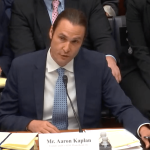Just 707,000 doses of the vaccine were due to be delivered to the nation’s medicines watchdog for safety checks this week – 30 per cent less than the government was hoping for. Health Department chief Professor Brendan Murphy forecast earlier this year the company would be supplying a million doses a week of the vaccine from the end of March. If things had gone to plan we should have seen over 4.7 million doses delivered by now when the 700,000 doses that arrived from overseas are added. Instead, News Corp Australia has learned only 3.7 million AstraZeneca jabs had been supplied by this week (including 700,000 from overseas) and a further 1.4 million Pfizer vaccines made it into the country. News Corp Australia asked Health Minister Greg Hunt whether CSL or AstraZeneca faced any penalties under their contracts with the government because they were not meeting production targets but his office sidestepped the question. “The Australian Government is working closely with both AstraZeneca and CSL to ensure that domestic production is on track to be delivered to Australians as soon as possible,” a spokesman for Mr Hunt said. “CSL are rapidly building capacity to produce at least one million doses per week to deliver a total of 50 million vaccine doses over the year,” the spokesman said. CSL’s struggle to meet the one million doses a week target is a key drag on Australia meeting its vaccine rollout target.National Vaccine RolloutManufacturing at CSL is ramping up and the number of doses being produced is significantly higher than in earlier weeks, the company told News Corp. “Production of the AstraZeneca COVID-19 vaccine is progressing well at both CSL Behring and Seqirus, and the teams continue to work around the clock to meet our commitment to the Australian community,” a spokesperson for CSL said. News Corp understands the production process for the vaccine is highly variable because the product has to be made as a biological soup and the number of doses in each batch can vary. Normally the company would spend years refining production processes for a new product but it does not have this luxury in the middle of the pandemic. Over time it expects to see production smooth out and become faster and more consistent.Slow supply is not the only problem with the vaccine rollout.As of this week there were over 5.1 million doses of COVID-19 vaccines available but only 3.6 million had been distributed and just over two million had made it into people’s arms. The government is holding 900,000 doses so it can provide the second jab needed to fully protect people. The second Pfizer shot is needed three weeks after the first, here is a three month gap between AstraZeneca doses. NED-3588 Covid Strains ExplainedFormer Australian Medical Association president Dr Mukesh Haikerwal said there was an astounding two week delay between a GP clinic ordering vaccines and them turning up. “We have a very good international state vaccine distribution for every single other vaccine like kids vaccines or flu vaccines but they gave the (COVID) contract to DHL and Linfox and that’s what happens when you get non-clinical or non-health people trying to deal with health, like another commodity,” he said. Doctors are also battling growing vaccine hesitancy after a series of rare blood clots linked to the AstraZeneca vaccine.“We’re probably running at 60 per cent capacity. We’re getting people who are cancelling (appointments for) their elderly parents, which is a bit concerning,” Dr Haikerwal said. As Australia battles to get its citizens vaccinated Europe, the US and the UK are planning to have COVID vaccine passports in place for the summer holidays in June. Vaccinated people from Britain and the US with COVID passports could holiday in the US, France, Italy and Germany and Greece by June 28. Spain is also planning to welcome British holiday-makers in June.NED-2170 How Coronavirus mutatesUniversity of NSW epidemiologist Professor Mary-Louise McLaws warned European governments to carefully calculate the risk of opening borders to holiday-makers. “If the vaccine efficacy is say, 95 per cent, there’ll be a five per cent group that won’t be protected at all,” she said.She estimates each of these countries would need to have 85 per cent of their populations vaccinated to have the herd immunity needed to safely open their borders. To date most countries are not even close to 50 per cent.“And then we’ve got one other problem that people aren’t talking about yet, and that is waning immunity,” she said.
Powered by WPeMatico





